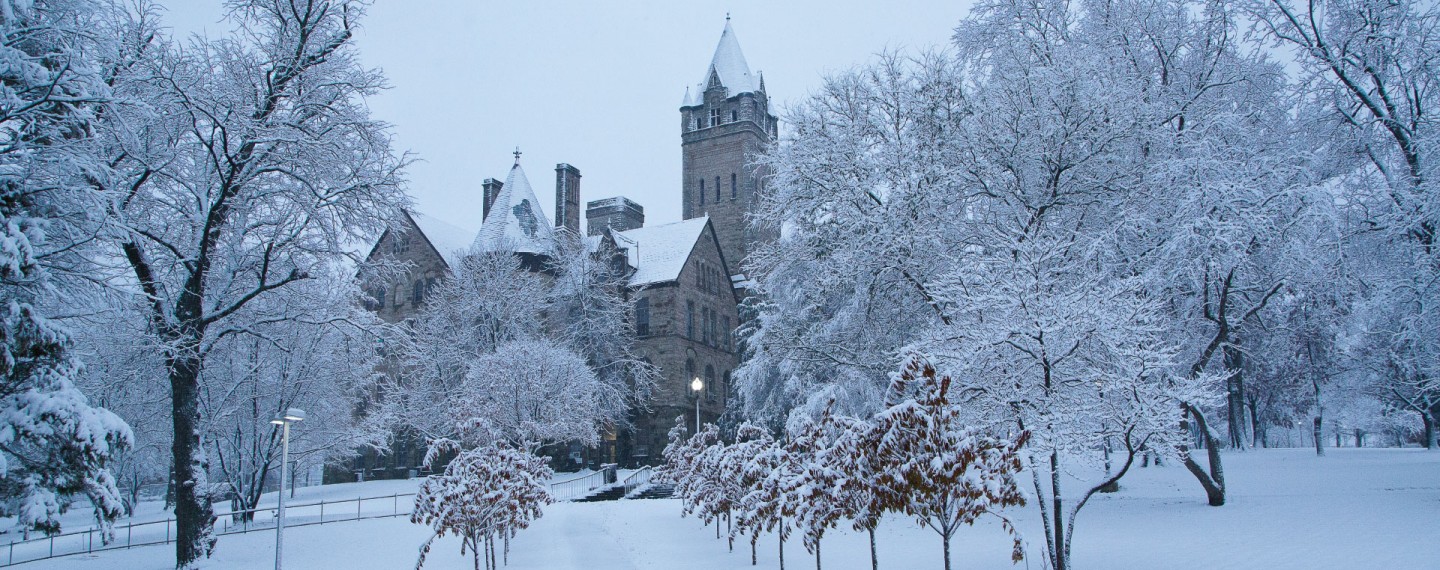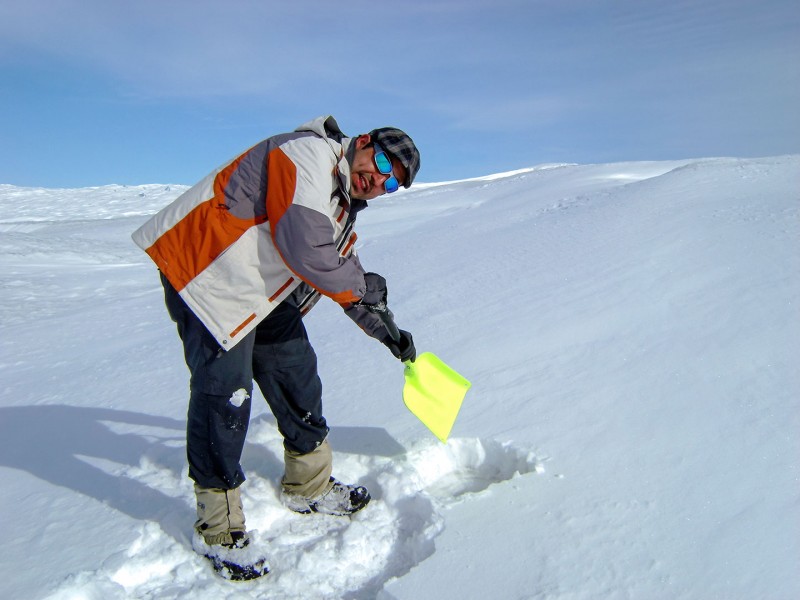From Our Perspective

“The combination of cold air and strong winds generated the dangerously low wind chills.”
Classes Were Canceled, But Why?
Geology-GeographyBy Dr. Nathan Rowley

Could there be a connection between melting sea ice and classes being canceled at Ohio Wesleyan for the first time, due to weather, in over a decade?
Across the Midwest and Northeast, towns and schools closed in late January due to what we know as the Polar Vortex. This anomalous event, which is becoming more and more frequent, is an atmospheric pattern where cold Arctic air is displaced southward. Let’s dissect this further.
From a climatological perspective, we expect temperatures in Delaware, Ohio, to range between 19 degrees F (overnight low) and 36 degrees F (afternoon high) during the month of January. This is the average of all January days between the years 1981-2010 – known as the climatology of Delaware.
We can expect storms or other atmospheric disturbances to bring variability in the weather, causing warmer periods, like the 67-degree day on January 12, 2017, and colder periods, like what we experienced this January.
Much of this is attributable to the jet stream, and where we lie within its path. The jet stream is a narrow band of fast-moving air high in our atmosphere, where (in the Northern Hemisphere) cold air is to the north and warm air to the south – think of it as a series of waves moving across the globe at these latitudes.
In our 2019 Polar Vortex event, warm air was sent northward which, forced polar air to be displaced; this air was cold, arctic air. During normal conditions, that air remains firmly in the high latitudes, making it extremely cold. However, since this air was displaced, it moved southward, following the jet stream, and impacted our region of the country. With it came strong pressure gradients – differences in pressure – that generated the strong winds we also felt.
The combination of cold air and strong winds generated the dangerously low wind chills. On January 30, the combination of -6 degrees and a wind of 20 mph generated a wind chill of -32 degrees! That meant that exposed skin would be susceptible to frostbite within 30 minutes.
Wind gusts were even higher, bringing wind chills down to levels that would cause frostbite to set in within the 10-minute range. With students potentially walking to class from the residential side of campus, the University deemed this hazardous.
In previous Polar Vortex outbreaks, such as the one that we were exposed to my first year at Ohio Wesleyan (January 2015, where overnight temperatures reached -18 degrees F), temperatures dipped much lower, but the winds remained calm, meaning wind chills were not dangerously low. Therefore, campus remained open. In the 2015 event, it was a calm (wind) sunny afternoon and temperatures rebounded into the teens and lower 20s in the region.
Scientists believe that, as counterintuitive as it may sound, climate change may be contributing to the enhanced frequency of these Polar Vortex events. This is because there is a reduction in sea ice.
Sea ice is very bright and reflects a lot of incoming sunlight. As the sea ice has melted away over the past few decades (due to climate change), the open ocean is much darker and thus absorbs much more of the sun’s energy. This heats up the atmosphere in the cold-ocean regions, and the warm air moves upward.
Above the warm air near the surface is the cold, arctic air that then gets displaced. This air then travels southward with the jet stream, bringing us the stories that we tell our families about the time that OWU canceled classes due to the cold weather in January of 2019.
